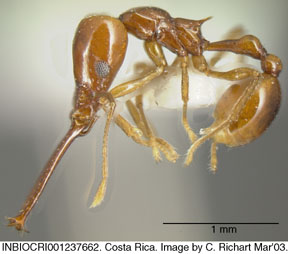
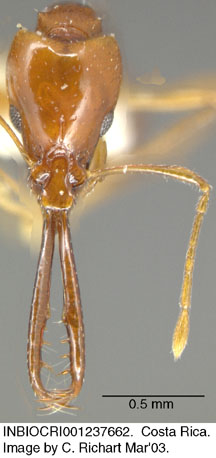
| return to guide introduction | go to genus list |
Uniform habitus; 11-segmented antennae. Wet forest leaf litter; uncommon.
|
 |
Very diverse habitus; mandibles vary from short and scissors-like to long and narrow; mandibles at base relatively widely spaced compared to Strumigenys, in ventral view labrum and other mouthparts protrude anteriorly beyond mandibular insertions.
Former Glamyromyrmex: shield-like face; downward-curving mandibles; 6-segmented antennae; deep antennal scropes with eye situated below scrobe. Cryptic inhabitants of forest leaf litter; rare.

Former Neostruma: 6-segmented antennae; mandibles evenly tapering to small apical fork; variable number of small denticles preceding apical fork; labrum long, and on dry specimens usually projecting downward (arrow). Cryptic ants in forest leaf litter; common but infrequently collected.

Former Smithistruma: 6-segmented antennae; antennal scrobes present, with eyes situated below scrobes; head and mandibles elongate (but without apical fork). Cryptic ants of forest leaf litter; moderately common.
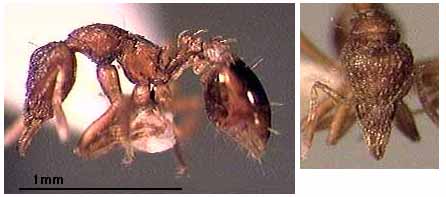
Former Trichoscapa: one species possibly in Costa Rica (T. membranifera); 6-segmented antennae; antennal scrobe with eye situated below scrobe; mandibles triangular with distinct gap between basal margin of mandible and anterior margin of clypeus. Pantropical tramp in disturbed areas; presence in Costa Rica not verified by Longino.
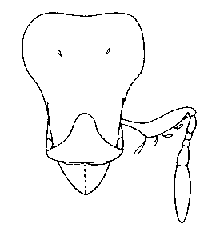
Moderately diverse habitus; mandibles close together at base, in ventral view appearing to arise from anteriormost portion of mouth cavity; 6-segmented antennae; antennal scrobes present, with eyes situated below scrobes; mandibles elongate with apical fork, but of highly variable length, shape, and dentition. Cryptic ants of forest leaf litter; common.
|
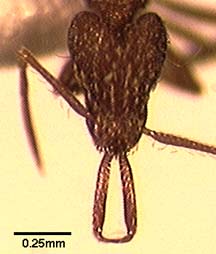 |
Former Quadristruma: one species in Costa Rica (emmae); 4-segmented antennae. Pantropical tramp in disturbed areas.
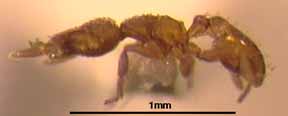
Page author:
John T. Longino, The Evergreen State College, Olympia WA 98505 USA. longinoj@evergreen.edu